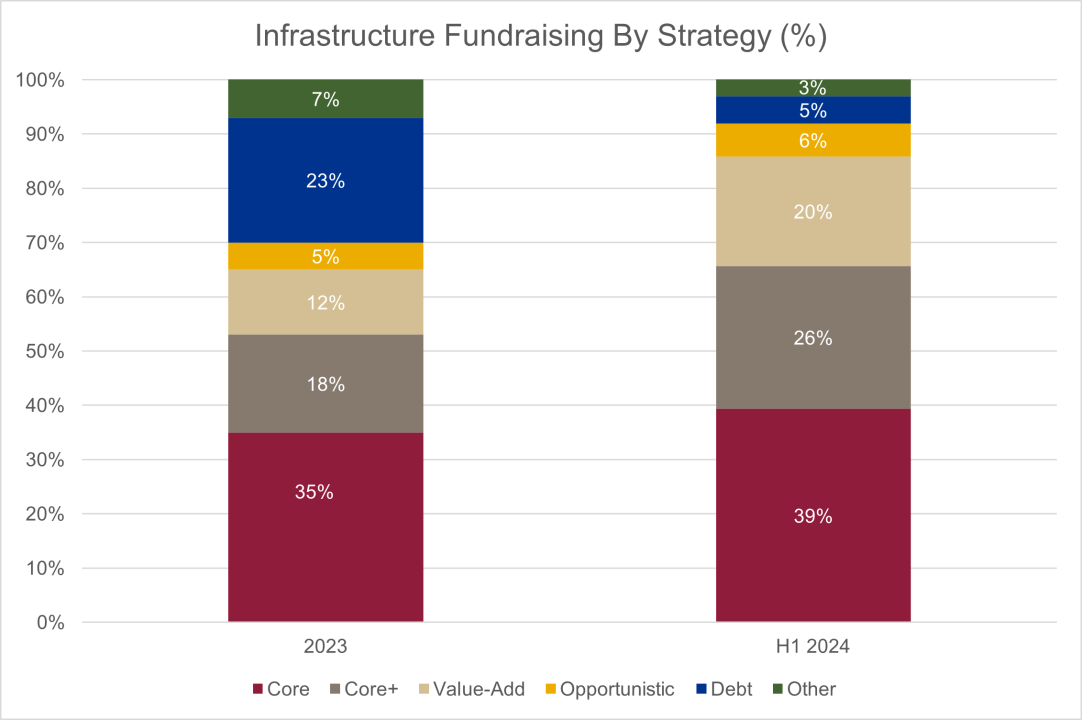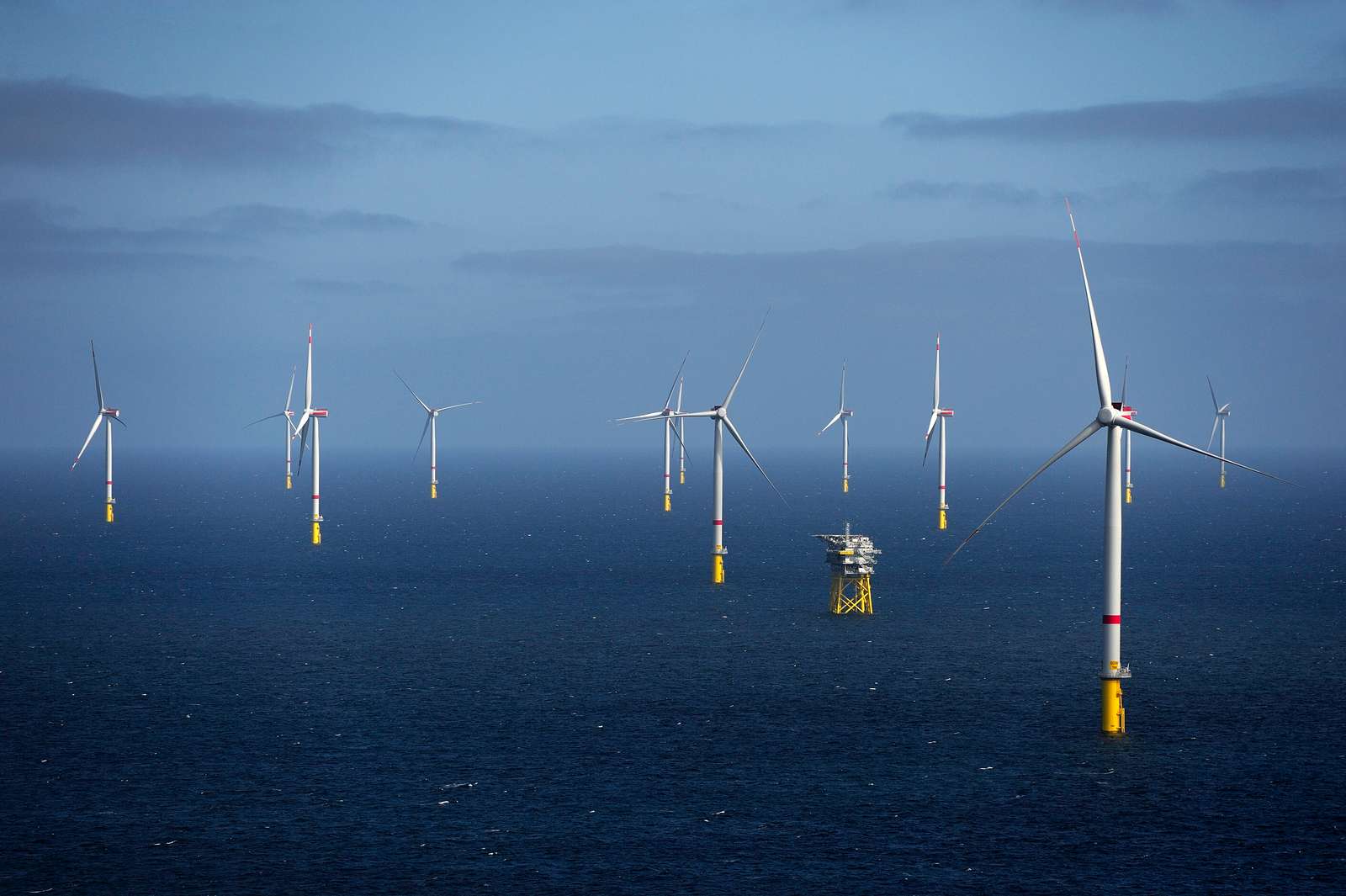On Wednesday, September 18th, the Federal Reserve cut interest rates by 0.5% to the range of 4.75% – 5% [1]. The federal fund rate is now forecast to stand at 3.4% by the end of 2025, according to the Federal Open Market Committee (FOMC) projections [2]. The move follows the recent cuts of other major central banks, including the European Central Bank and the Bank of England. With investors anticipating falling central bank rates in 2024, we have already seen some tactical positioning in 2024, also reflected in latest fundraising data published by Infrastructure Investor [3].
A Shifting Market:
The private infrastructure fundraising market remains in a “slower-for-longer” phase, yet latest data from Infrastructure Investor for the first half of 2024 point at a 150% increase over last year, as the market continues to recover. In comparison to 2023, we see a meaningful shift in allocations, with private infrastructure debt fundraising having decreased meaningfully, and value-add recording the strongest increase, from 12% in 2023 to 20% in H1 2024. Core and core+ strategies are also growing in demand [4].

Source: Infrastructure Investor, September 2024
Infrastructure Debt:
In 2023, the higher rate environment drove a meaningful increase in private debt fundraising, and infrastructure debt grew as an asset class. However, prospects of lower central bank rates in Europe, the UK and US have led to expectations of lower entry returns for private debt, driving a deceleration in fundraising, in a context of material dry powder that built up in 2023 which still needs to be deployed. Moreover, lower rates may trigger a wave of refinancings, as infrastructure businesses take advantage of lower cost of debt, thereby reducing the duration of outstanding infrastructure debt.
Core Infrastructure:
In 2022 and 2023, core infrastructure strategies focusing on yield experienced a reduction in popularity, as asset bid-ask spreads widened decreasing transaction volumes. Core transaction prices softened, amid higher interest rates both across the primary and secondary infrastructure markets. With valuations having now largely stabilised, and interest rates expected to decrease, investors may perceive the 2024/2025 core infrastructure vintages as particularly conducive to crystallising attractive entry yields in high quality assets and capturing some future capital appreciation potential
Value-Add Infrastructure:
Value-add infrastructure fundraising has gained in popularity in H1 2024. Prospects of lower rates pushed investors to increase allocations to strategies offering potential for higher returns. Value-add strategies offer exposure to secular trends, such as decarbonisation and digitalisation, supporting growth and value creation that may be difficult to capture elsewhere amid a weakening outlook for the global economy.
The bulk of the opportunity is concentrated in the mid-market, with the number of assets requiring capital exceeding available dry powder. With value-add infrastructure assets less exposed to systemic risks, such as movement in interest rates, and more exposed to idiosyncratic risks, diversification benefits and de-risking revenue volatility are an additional consideration underpinning the strategy amid increased macroeconomic and market uncertainty
To sign up for our insights series, or to speak to a member of the team, please fill out the form here.

Gianluca Minella
Head of Infrastructure Research
To read more on this topic, please visit our value-add infrastructure knowledge hub
References:
[1] Federal Reserve, Press Release, September 18, 2024
[2] Federal Reserve, Federal Open Market Committee, September 18, 2024
[3] Infrastructure Investor, September 2024
[4] Infrastructure Investor, September 2024
This document is issued by InfraRed Capital Partners Limited (“InfraRed”). InfraRed is authorised and regulated by the Financial Conduct Authority (“FCA”) with firm reference number 195766. This document is for information and convenient reference, and does not constitute an offer or solicitation for, or advice that you should enter into, the purchase or sale of any security or other investment product or investment agreement, or any other contract agreement or structure whatsoever.



